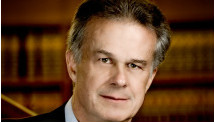LONDON (Reuters) - The Federal Reserve's ultra-loose monetary policy is a root cause of the "currency wars" that some see as a looming threat to the world economy, but don't expect the U.S. central bank to signal a shift back to normal any time soon.
The Fed, whose policy-setting Federal Open Market Committee concludes a two-day meeting on Wednesday, said just last month that it expects to keep short-term interest rates exceptionally low until the U.S. unemployment rate falls to 6.5 percent, inflation permitting.
That goal is still distant. Figures on Friday are likely to show that the jobless rate was unchanged in January at 7.8 percent, while the economy created 155,000 jobs, the same as in December, according to economists polled by Reuters.
So it would be a huge surprise if the Fed were to do anything other than reaffirm last month's decision to anchor short-term interest rates in a range of zero to 0.25 percent and to keep buying $85 billion of bonds each month to hold down long-term rates.
The only question mark is whether the FOMC vote will be unanimous now that Richmond Fed President Jeffrey Lacker, who opposes the current round of bond-buying, has rotated off the panel, said Harm Bandholz, an economist with UniCredit Bank in New York.
Most economists polled by Reuters expect the Fed to keep its open-ended bond-buying program in place well into next year, even though the economic news flow and market confidence are improving markedly.
True, Wednesday's preliminary report on fourth-quarter GDP is likely to show that growth slowed to an annualized rate of 1.2 percent from 3.1 percent in the July-September period.
And the current quarter will also be soft as the expiry of a 2 percent payroll tax cut is dampening consumer spending.
But then Bandholz expects an average growth rate of 2.8 percent over the rest of the year. That would be the strongest three-quarter period of the recovery so far, he said.
"The outlook has improved a lot in the U.S. I've been on the cautious side for the last three years, but this time I'm a bit more bullish," he said.
THE FED BIDES ITS TIME
The recovery in housing would add at least half a percentage point to GDP growth in 2013, while capital spending was likely to revive now that uncertainty over budget talks in Washington had been largely allayed, Bandholz said.
"There's a lot of pent-up demand in the system. I don't think all these investments have been abandoned; they've just been postponed," he said.
At some point, investors' exuberance over the super-easy stance of the world's major central banks will give way to worries that they are about to take away the punch bowl.
Gustavo Reis, an economist with Bank of America Merrill Lynch in New York, said concerns about the costs of money-printing were likely to spread but would be offset by uncertainty over the impact on growth of fiscal tightening in the United States and Europe.
"All told, although global activity seems more robust now than at any point in 2012, we expect policymakers to continue to worry predominantly about downside risks," he said in a note.
The bank does not expect the Fed to consider halting asset purchases before 2014, while the latest episode of monetary easing announced by the Bank of Japan is likely to be ‘long-lived and significant'.
Many economists argue that bold monetary action is long overdue in Japan, whose nominal output has not grown in 20 years, saddling the government with a debt-to-GDP ratio of more than 220 percent.
But Douglas McWilliams, who heads the Centre for Economics and Business Research, a London consultancy, fears Japan's decision will lead the global economy into unpredictable currency wars.
"It's a bit like if someone's rude to you, you're rude to them back. You get tit-for-tat behavior," McWilliams said.
CURRENCY FRICTION, BUT NO WAR
Olivier Blanchard, the chief economist of the International Monetary Fund, last week called talk of currency wars overblown and said countries had to pull the right policy levers to get their economies back on track, with corresponding consequences for exchange rates.
However, McWilliams said the problem was that it was difficult to get countries to agree NOT to wage currency wars.
Tellingly, Chancellor Angela Merkel voiced German concerns last week that Japan might be deliberately seeking to cheapen the yen to give its exporters a competitive edge.
"So we may well find that there is a period of very heavy volatility before the authorities involved try and get some kind of agreement," McWilliams said.
In a relatively quiet week for economic data in the euro zone - money supply figures and confidence surveys from the European Commission are the highlights - the focus is likely to remain squarely on the euro, which has been rising briskly as traders price in the policy shifts that Blanchard had in mind.
While the Fed and the Bank of Japan are expanding their balance sheets, the European Central Bank is starting to soak up some of the emergency cash it lent to banks a year ago.
The central bank said on Friday that banks would repay early 137 billion euros of cheap borrowed money.
"I'm not sure if we have too strong a euro for the moment but certainly we would not want to see a currency war of competitive devaluations which would have a negative effect on the euro," the European Union's top monetary official, Olli Rehn, told Reuters.
(Additional reporting by Paul Taylor in Davos; editing by Jason Neely)

